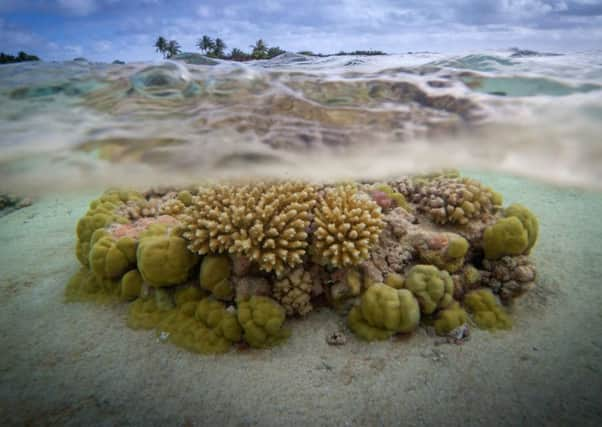Bleaching kills third of Great Barrier Reef's coral


Researchers who conducted months of aerial and underwater surveys of the 1,400-mile reef off Australia’s east coast found 35 per cent of the coral are dead or dying, Terry Hughes, director of the ARC Centre of Excellence for Coral Reef Studies at James Cook University in Queensland, said some parts of the reef had lost more than half of the coral to bleaching.
The extent of the damage, which has occurred the past couple of months, has serious implications, Mr Hughes said. Though bleached corals that have not died can recover if the water temperature drops, older corals take longer to bounce back and are not likely to have a chance to recover before the next bleaching event occurs, he said.
Advertisement
Hide AdAdvertisement
Hide AdHe said coral that has died is gone for good, which affects other creatures that rely on it for food and shelter.
“Is it surprising? Not anymore. Is it significant? Absolutely,” said Mark Eakin, the coral reef watch co-ordinator for the US National Oceanic and Atmospheric Administration. “We’re talking about losing 35 per cent of the population of coral in some of these reefs – that’s huge.”
The damage is part of a massive bleaching event that has been impacting reefs around the world for the past two years. Experts say the bleaching has been triggered by global warming and El Nino, a warming of parts of the Pacific Ocean that changes weather worldwide. Hot water puts stress on coral, causing it to turn white and become vulnerable to disease. Other reefs have suffered even more severely from the recent bleaching; Some Pacific islands, for example, have reported coral death rates of more than 80 per cent, Mr Eakin said.
This is the third and most extreme mass bleaching event in 18 years to strike the Great Barrier Reef. In each case, the areas that suffered the worst bleaching were the areas where the water was hottest for the longest period of time, Mr Hughes said. This time, the southern half of the reef was spared largely due to a lucky break that arrived in the form of a tropical cyclone. The remnants of the storm which had lashed the South Pacific brought cloud cover and heavy rains to the region, cooling the ocean enough to stop bleaching that had just begun in the south. About 95 per cent of the coral in the southern portion of the reef has survived.
Storms have previously proven very helpful for heat-stressed reefs, Mr Eakin said.